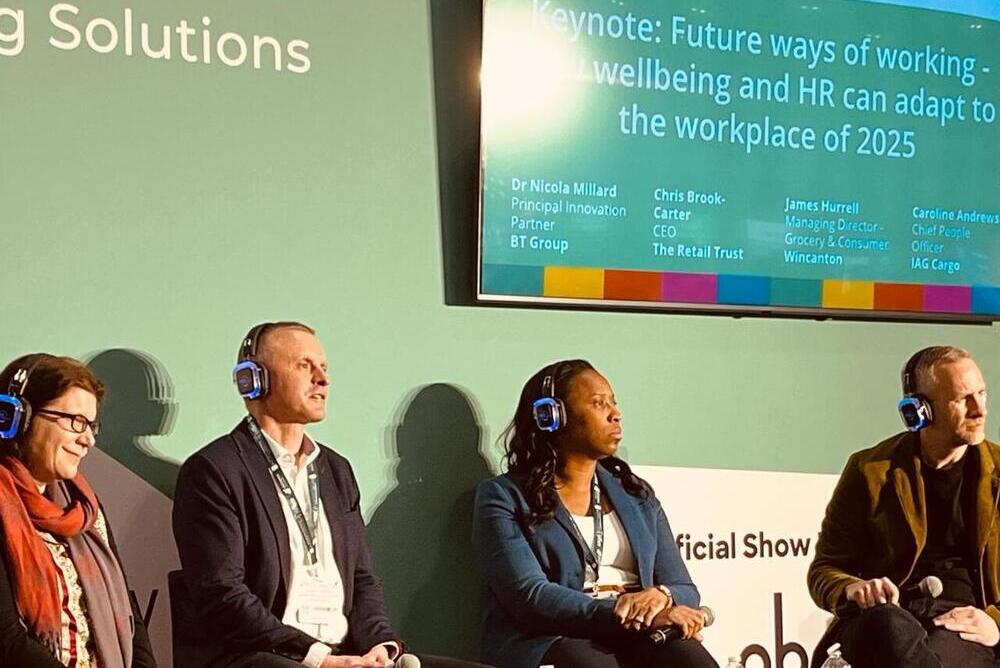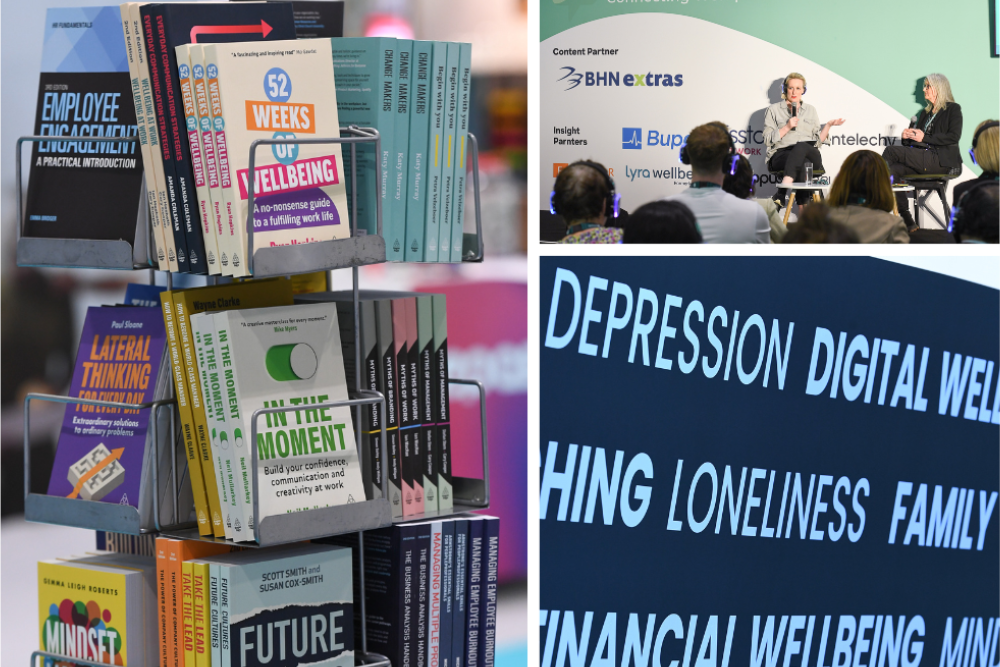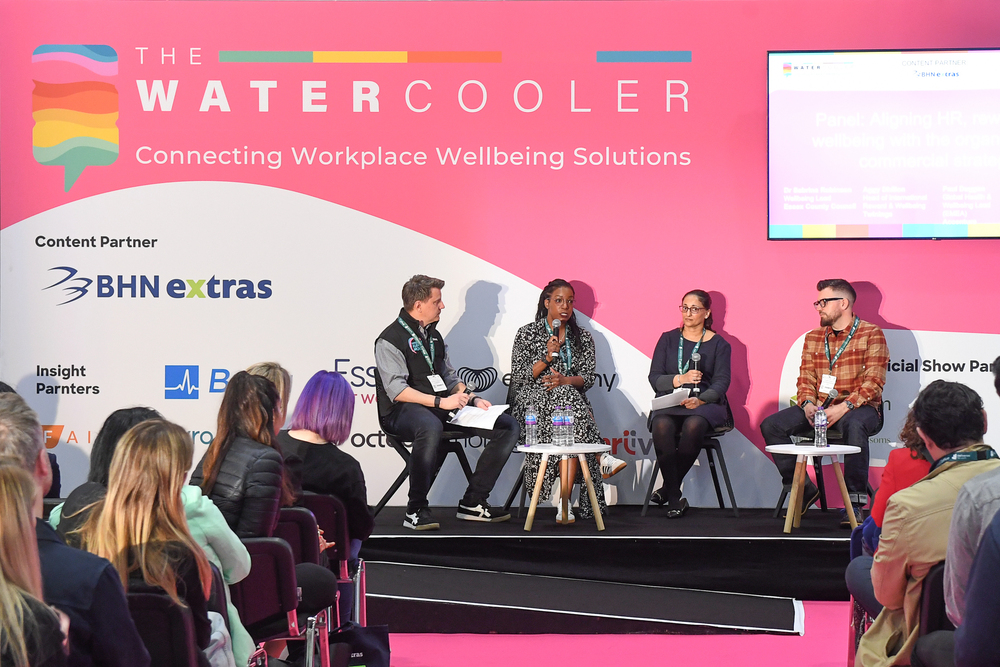As we said in this article, one of the biggest challenges currently facing business is how to achieve high performance from employees without compromising their wellbeing.
We asked experts for their thoughts and compiled these suggestions:
1.Is your leadership showing they prioritise wellbeing and taking time to rest to avoid burnout?
There’s no point spending your time and energy promoting wellbeing messages if they’re not. You’d be better off spending your time motivating leadership to understand the importance of role modelling if they want their staff to perform at a high level sustainably.
2.Talk to your employees about what support they need to do their job well
Start with the basics. Do your employees have everything they need to do their job well? Have you asked them?
The tenants of “good work” are more important than ever at this tricky time. Beware that how senior management defines this might be different from employees.
For that reason, Jo Yarker, Managing Partner, Affinity Health at Work, suggests a “wide and diverse consultation to ensure that decisions reflect the needs of employees, and not what managers or stakeholders think is needed”.
3.Beware that some employees will need more support in these tough times
Employees with complex cases of mental health are likely to need more support as external stressors increase, for example.
As Yarker says, with pathways to healtchare in the NHS “so delayed”, the best way will probably be for employers to intervene and provide early intervention in order to have the best chance of keeping that employee in work and well.
Note, too, that the traditional EAP approach may not be sufficient for these complex cases. “They will often need more than the minimal six sessions to recover and sustain their health,” says Yarker.
Employees with chronic longterm conditions may also find that the extra stress of the uncertain economic outlook exacerbates their illnesses.
Sally Hemming, Health and Wellbeing Lead, EY, is talking about managing long-term conditions at The Watercooler Event in April and believes that “the concept of having to be 100% well and ‘on it’ all the time is unrealistic; things don’t and can’t always roll like that”.
4.Personalise support
Business can learn much from the sporting world when it comes to achieving high performance. Lesley McKenna is a three time Winter Olympian and now works as a ‘coach developer’, supporting coaches to support their athletes. Personalisation of support, she says, is crucial to success:
“Everybody learns and works differently, so you need to be flexible enough to help people understand how they work, why they work that way and support them to learn different ways of working,” she says. “The corporate world could take alot from sport with respect to the individualisation of programmes.” (More on Lesley’s approach to high performance in another feature coming soon).
For more on Olympian McKenna’s advice read this piece here.
5.Don’t forget to support your line managers
One of the most stressful things about economically challenging times is the worry of redundancy for the employee, and the prospect of having to make people redundant for line managers.
Make sure you are equipping your managers with the skills to make redundancies and restructures in a compassionate way, for those leaving and those left behind.
6.Beware slashing training budgets in a cost cutting exercise
Have you cut your training budgets, or other employee personal development, in these tougher market conditions? Have you cut any training that, actually, is counter productive because it would support your employees to perform more highly?
Simon Ursell, Chair at environmental consultancy Tyler Grange and board advisory to several SMEs, is very interested in how to get high performance from employees (see this feature). This was one of the firm’s reasons for switching to a 4 Day Week and, doing so, has led to a 10% increase in productivity compared to a 5 Day Week.
In Ursell’s opinion, “many companies are cutting back on the wrong things and going to cause themselves enormous problems in the future”. For him, for example, giving everyone access to an inhouse psychologist is a no-brainer and an essential investment when seeking high performance.
7.Show genuine care for employee wellbeing
Particularly when it comes to high performance of those employees from diverse backgrounds, Ngozi Weller, Founder of Happi Workers, suggests that showing “genuine care for staff wellness” is one of the most important things to do.
She suggests:
“First, communicate compassionately about business priorities while providing a judgment-free space for employees to voice worries. Regular, reliable communication fosters trust and dialogue.”
8.See if there are any benefits you can provide that save your employees money
Evaluate your current wellbeing benefits and programmes like gym discounts, adds Weller. “Consider augmenting offerings to help relieve monetary pressures, even if minimal. Small subsidies for meals or public transportation go a long way psychologically,” she says.
Beyond programmes, she advises sharing budget-friendly self-care strategies like breathing exercises or mindfulness techniques, and fostering peer support through team-building activities.
9.Offer flexibility
“Bear in mind that burnout can come from inflexibility”, says Executive Coach and effectiveness trainer with The Brick Coach, Francesca O’Connor.
Yarker agrees, saying flexibility is vital, especially at the moment, giving the example that companies could give employees the flexibility to commute in cheaper travel windows, or so they can work around care responsibilities.
EY’s Hemming says that flexible working can be a huge help to people dealing with chronic longterm health conditions. She gives the example of someone with chronic fatigue or MS, who might feel particularly tired in the afternoon so would benefit from starting work earlier.
It comes down to, she says, employers keeping abreast of people’s changing needs and “adjusting working conditions accordingly”. Hemming is speaking about chronic longterm conditions and wellbeing at The Watercooler Event in April.
10.Don’t be afraid of committing to wellbeing in the face of pressure to perform
“What do organisation want to be known for? What features of your working conditions?” asks Hemming. “Of course I can work for long hours, work fast and through periods of stress. But it’s not a lot of fun to do all the time. It is a risk for health and symptoms of chronic longterm illnesses, too. I think this is really about organisations owning that ‘wellbeing identity’ and creating jobs that are good for people.”
11.Pay people fairly, and on time
It may seem obvious, but not all workplaces do this. This should include freelance workers as well as employees, often an invaluable human resource allowing businesses to up and down scale quickly, in response to need. Additionally, if employees are hybrid working then employers could cover associated costs, like internet and electricity.
12.Look after employee financial wellbeing
Provide financial education and be sensitive to any stigma associated with financial struggle. Don’t assume that your highest performers, or highest salaried, don’t suffer poor financial wellbeing. Financial wellbeing is not linked to how much money you have or make but about how much control you feel you have.
13.Ensure employees realise wellbeing is a shared responsibility
Encourage your employees to work on their own ‘mental fitness’, says Ursell, adding that there is much free content that can help. “It doesn’t have to cost much,” he says. “The best, highest performing athletes, for example, are always working on their emotional fitness and probably finding this harder than working on their physical fitness.”















